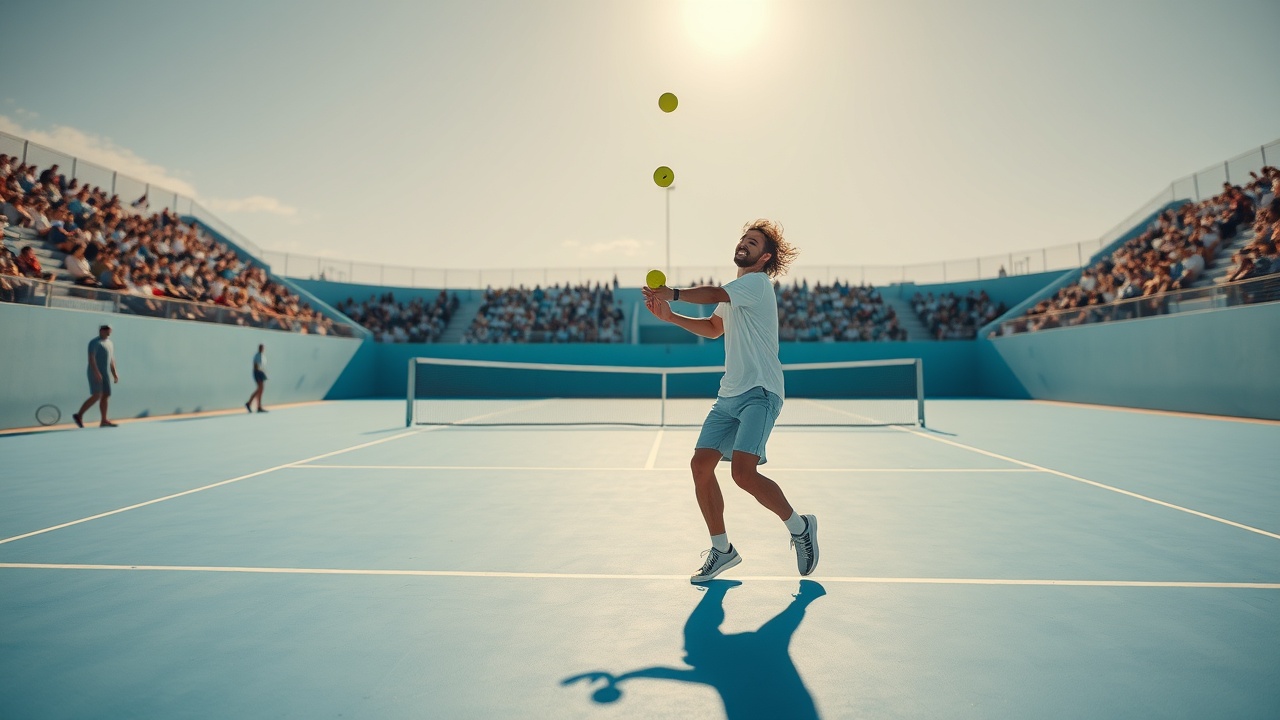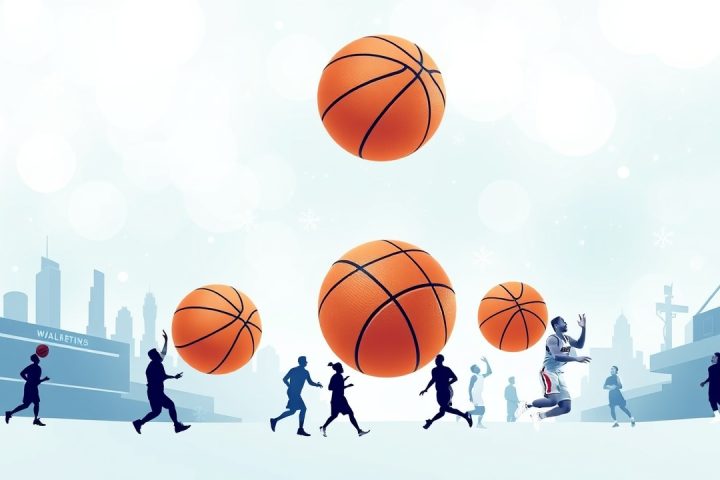Juggling: A Unique Warm-Up in Tennis
Last summer, during the initial week of tennis competitions at the Paris Olympic Games, a captivating video emerged featuring Carlos Alcaraz, a leading figure in the sport, juggling three tennis balls in a bustling corridor of Roland Garros. Completely engrossed, Alcaraz deftly maneuvered to maintain a rhythmic juggling pattern. This entertaining display wasn’t a one-time occurrence; a quick search on YouTube reveals multiple clips of Alcaraz practicing this act with his physiotherapist, Juanjo Moreno, who frequently joins him in this lighthearted exercise.
Inspiration and Adoption by Other Athletes
This intriguing warm-up has even inspired young talent Mirra Andreeva, an 18-year-old Russian sensation, who playfully remarked,
“We stole that one”
when discussing how she incorporates juggling into her regimen. Similarly, Jannik Sinner, one of Alcaraz’s main competitors, and American player Jessica Pegula have also embraced the benefits of juggling in their training routines. Even NBA superstar Steph Curry has integrated a tennis ball into his elaborate dribbling practice, which blends traditional basketball skills with juggling techniques. Brandon Payne, Curry’s performance coach, noted that the quest for continuous improvement drives these unique methods.
The Science Behind Juggling
From a psychological and neurological standpoint, the reasons behind such unconventional warm-ups are more profound than they might initially seem. While the primary rationale is to enhance hand-eye coordination—particularly before significant matches like Alcaraz’s upcoming clash against American Taylor Fritz in the Wimbledon semifinals—research indicates that juggling may also inspire notable changes in the brain.
Noah Cowan, a mechanical engineering professor at Johns Hopkins University, has extensively studied the effects of juggling on the brain, affirming that the activity engages the entire sensory-motor system. He explains that juggling acts as a calibration tool that helps individuals manage uncertainty and improve their motor planning.
Cowan, who learned juggling as a child out of intellectual curiosity, recognized the fascinating mathematical patterns involved. His inquiries into control theory led him to evaluate the significant distinctions between human and robotic movements, ultimately focusing on the neurobiological elements that make juggling an effective cognitive exercise.
Benefits of Juggling
Research has demonstrated that juggling can lead to increases in both gray and white matter in the brain—areas critical for memory, emotion, and movement coordination. A study highlighted that just six weeks of practicing juggling for 30 minutes each day can enhance the brain’s regions responsible for motor functions and peripheral vision.
Despite its surprisingly intricate benefits, juggling remains an accessible activity that can easily be done anywhere.
“It’s an incredible way to immerse yourself in the present moment and develop focus,”
Cowan points out. He acknowledges that while there are various exercises that could achieve similar benefits, juggling stands out for its portability.
Personal Experience with Juggling
On one serene holiday weekend morning, I decided to emulate Alcaraz’s exercise, albeit without six weeks’ worth of practice to potentially elevate my brain’s white matter. Instead, I had a quiet place to test my juggling skills, armed with three tennis balls despite my limited ability. Interestingly, research suggests that the mere act of challenging oneself to learn, rather than mastering the skill, is what contributes to neuroplasticity. Cowan emphasizes the importance of pushing beyond comfort zones during this process.
After about 10 minutes of juggling, which felt extensive given my limited experience, I transitioned to hitting against a wall. While I cannot definitively prove it, I sensed enhanced coordination and focus while practicing my groundstrokes. The next day, as I joined a pickup basketball game, I once again pulled out some tennis balls to juggle and even drew a chuckle from a fellow player who humorously questioned my approach, likening me to Curry. During that game, I felt a subtle yet noticeable sense of balance, presumably due to the novelty of my warm-up routine.
Conclusion: The Joy of Juggling
Andrea Hudy, director of sports performance at the University of Connecticut’s women’s basketball team, has similarly witnessed the positive effects of juggling on athlete training, noting its benefits for teamwork and overall engagement due to its enjoyable nature. As she aptly put it,
“The major thing is that it’s fun,”
echoing Alcaraz’s sentiments about deriving joy from his performance on the court. His simple yet effective warm-up routine encapsulates a larger philosophy: juggling not only nurtures cognitive development but also brings a sense of delight and engagement to the sport.
In essence, Alcaraz’s juggling practice exemplifies a blend of fun and functionality, showcasing how even the simplest activities can contribute significantly to an athlete’s performance and mental acuity.




